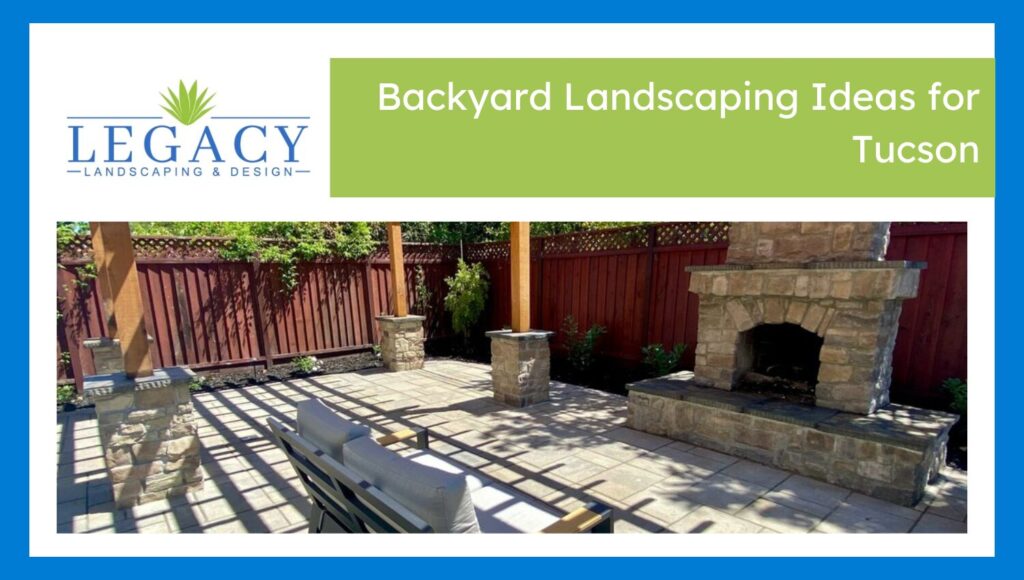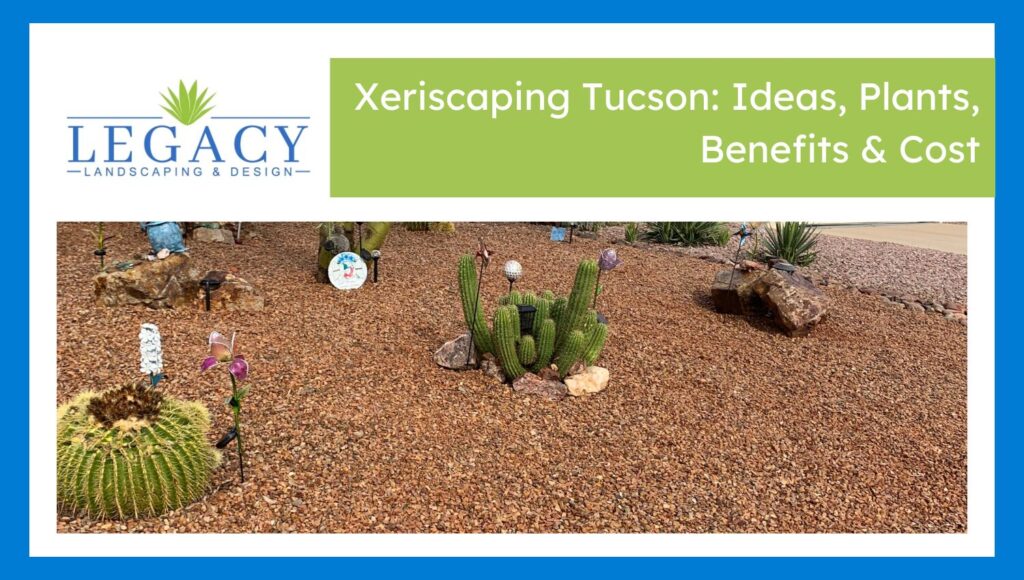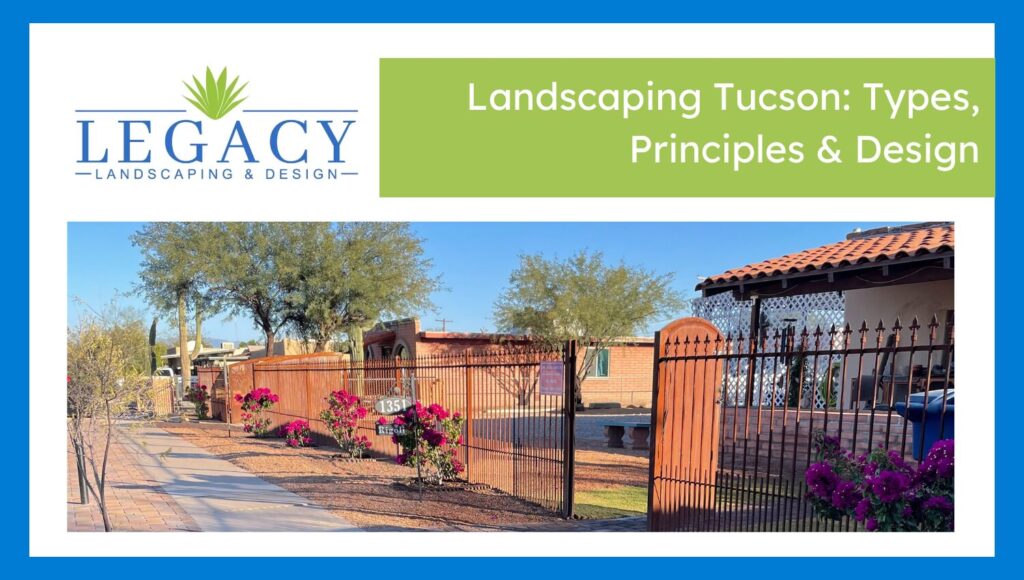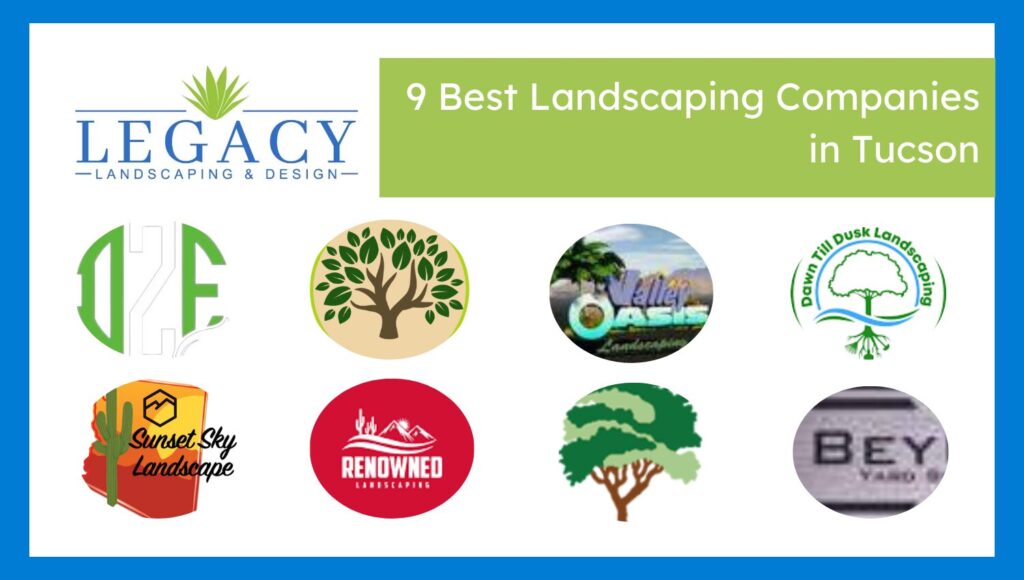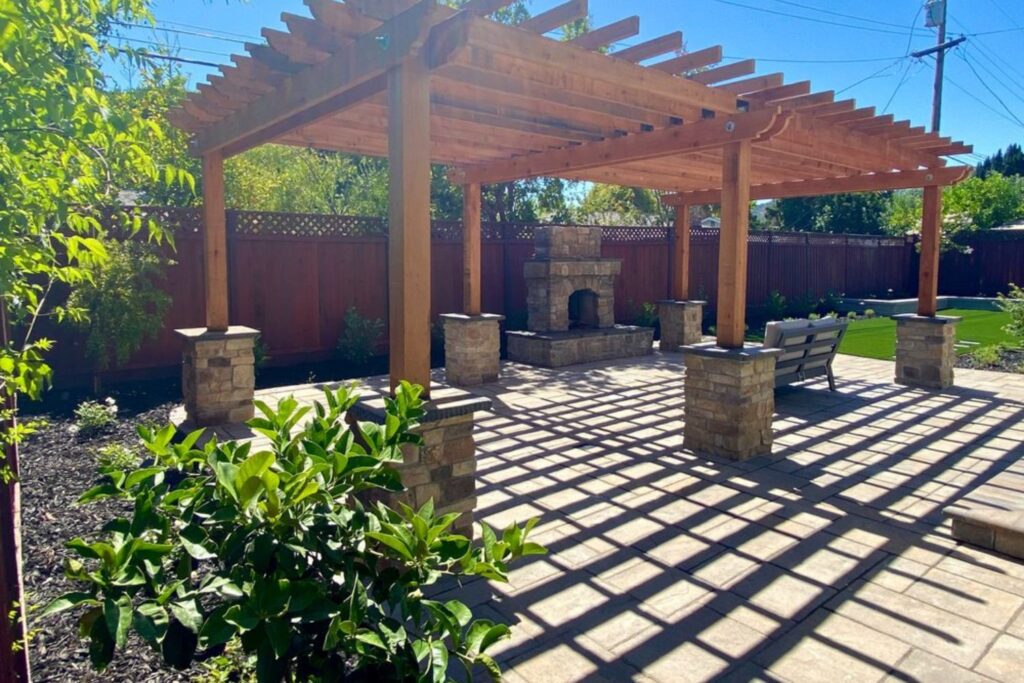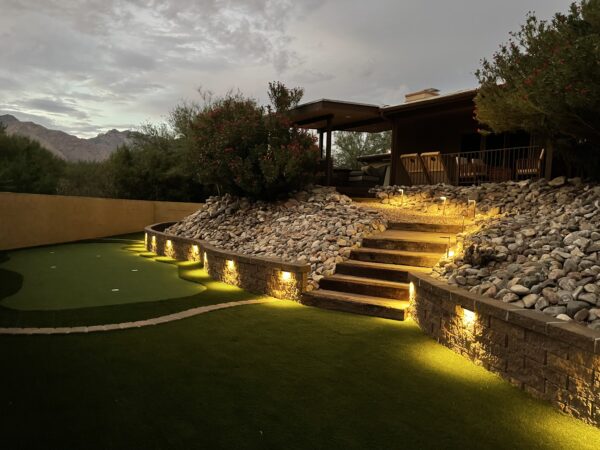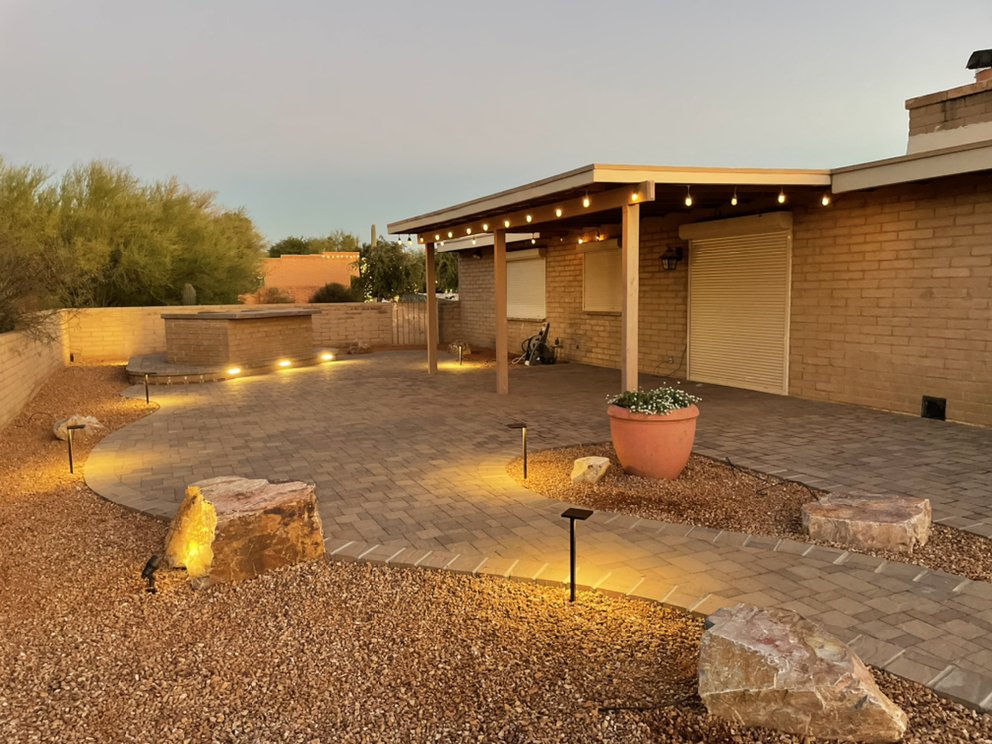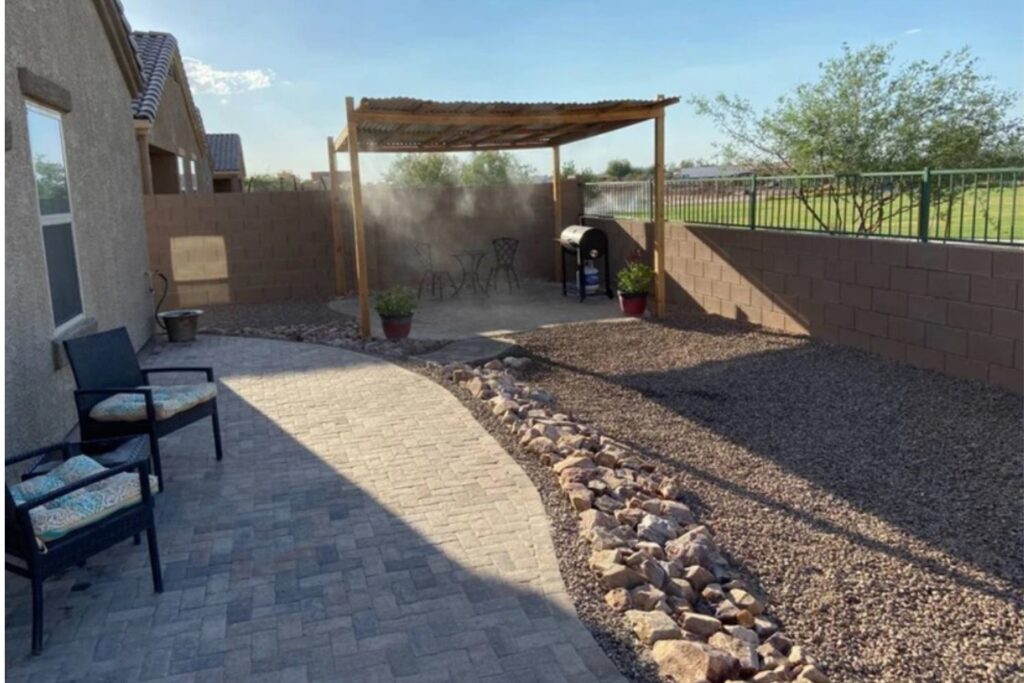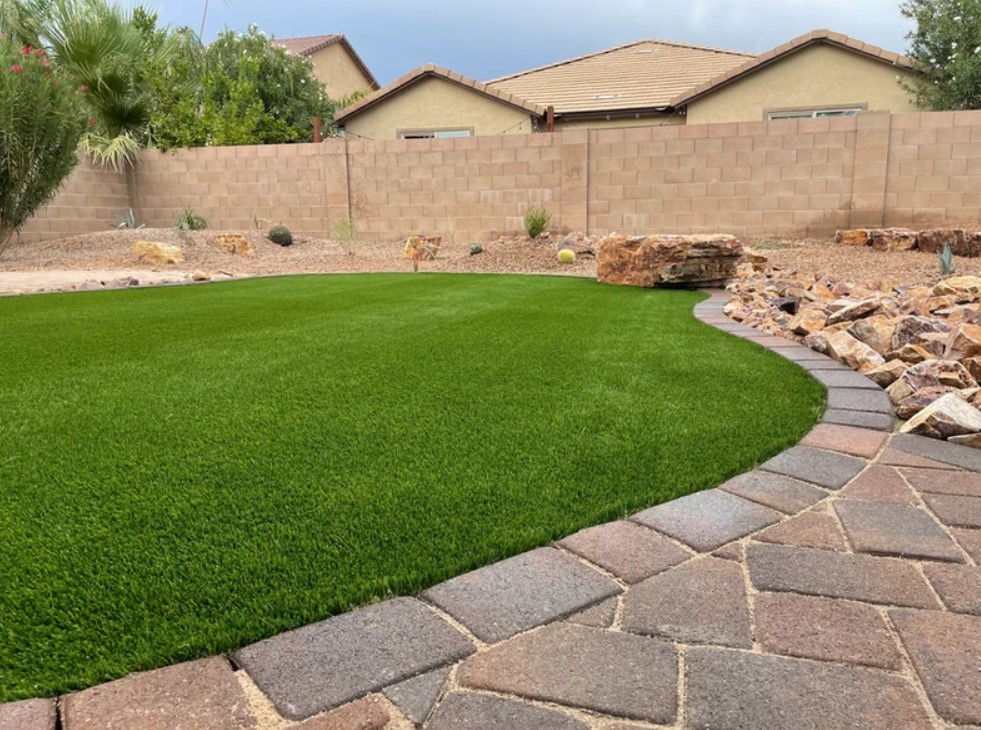Backyard Landscaping Ideas for Tucson
What is Backyard Landscaping? Backyard Landscaping is the process of renovating and transforming your outdoor space at the back of your house to make it an enjoyable and functional area. Backyard landscaping incorporates plants, trees, walkways, water features, and other decorative items to design and make your backyard look aesthetic. Look for naturalistic, formal, modern, edible, and themed approaches to make your backyard attractive and worth the hype. Here are 15 backyard landscaping ideas to help you enhance your backyard’s beauty and overall look. Large Pavers for Spacious Design Fire pit, Shade & Gravel Combo Pergola with Firepit & Pavers Functional Outdoor Kitchen Low-Maintenance Artificial Turf Outdoor Lighting Highlights Mini Backyard Golf Area Cool Off with a Pool Kid-Friendly Play Area Gravel & Drought-Tolerant Plants Compact Soccer Field Gravel Basketball Court Desert-Themed Vertical Garden Butterfly and Pollinator Garden Desert Rockscape with Pathways Table of Contents https://youtu.be/KCOH20ughsU Large Pavers for Spacious Design Using large pavers is ideal for backyard landscaping to design a spacious and modern backyard. It reduces the size of visible seams, resulting in a neat and secure surface that increases the sense of openness and order. To add beauty and aesthetics to your backyard landscaping, use natural beige or terracotta tones for its resemblance to desert looks. Plant them alongside gravel between the cracks for easy maintenance. Rough-looking surface that does not allow for weed growth. To further upgrade the design, consider adding plant borders and selecting bright, water-saving foliage or installing pathway lighting to accent the beauty and utility of the space at night. Fire pit, Shade & Gravel Combo The fire pit, shade, and gravel combo make the backyard design look perfect for relaxation and other entertainment activities. Heat-reluctant stones or fire bricks are used to ensure safety and longevity in your backyard. It is best to encircle the gravel area with native plants, succulents, or boulders to boost the tortoise’s natural habitat feel. For added convenience, install solar lighting around the territory, along the walking paths and seating zones, for nighttime visibility. Adding a pergola or a shade sail in the shade-providing area is better as it provides relief during the day. The combo of fire pit, shade, and gravel works wonders and contributes to the aesthetic continuity of your landscape. Pergola with Firepit & Pavers Beautiful paver with a fire pit and the exquisite structure of a pergola offer comfort and elegance in leisure and social events. Choose a pergola decorated with vines or flowers to create a sense of depth and visual appeal, designed to withstand heat and Tucson weather. To increase the use of the pergola, add bougainvillea climbing plants and create a natural roof with more shades and bright colors. To get a spacious and stable surface, you can also surround large pavers in the Fire pit. Install a fire pitting area with ergonomic chairs and ensemble the chairs with waterproof cushions for enhanced style and coziness, allowing guests to feel comfortable by the fire. This combination offers comfort and a perfect centrepiece for outdoor living. Functional Outdoor Kitchen A functional outdoor kitchen turns your backyard into a cooking area. Includes an integrated grill, a large cutting board area, a pristine workspace, and sufficient storage to make it a perfect and functional kitchenette. Choose stone or concrete that fits naturally in Tucson conditions to enhance the look. Turn the space into a bar-styled seating arrangement or an adjacent eating table to make people enjoy their time. A functional outdoor kitchen contributes to enhancing the practicality and improving the overall appearance of your backyard. It adds a stylish focal point to the seating, dining, or stargazing areas to provide more comfort for gatherings and meals all year round. Low-Maintenance Artificial Turf Low-maintenance artificial turf is an easy solution to have green grass all year round. Select polypropylene, nylon, or polythene material for artificial grass that easily withstand scorching heat to ensure durability and vibrant color even in harsh sunlight. Place it all over small play areas, pet-friendly areas, or along pathways to make favourable aesthetic and functional spaces with a natural look. Enjoy a beautiful, vibrant lawn using stone, gravel, or drought-tolerant plants, giving your backyard a more refined look. Artificial turf provides the same aesthetic value as natural grass but saves water and mowing, which makes it suitable for homeowners who do not have time to maintain large lawns. Outdoor Lighting Highlights Outdoor lighting transforms your backyard into a beautiful, romantic evening entertainment and relaxation. Use solar lights for lighting pathways, patios, and garden beds, as they help you save energy. Choose string lights, lanterns, or LED strips to create a warm space for chatting with friends or relatives under the stars. Highlight fire pits, cacti, or sculptures with proper planning, adding depth and character to your landscape. All this layered lighting enhances safety and functionality and brings the ambience of your backyard sanctuary to the next level, both during the day and at night. Mini Backyard Golf Area A mini backyard golf area adds fun and excitement for all sports lovers. It is best to use low-maintenance artificial turf for the putting green to ensure it is usable year-round. Add borders of gravel, stones, or any drought-resistant plant to make the Golf area design neat and professional-looking. Create small bumps, including rocks, slopes, or mini sand traps, to challenge players of all ages and enhance the fun. This minimal golf set provides hours of fun, making it an excellent feature in any backyard. Cool Off with a Pool A backyard pool is the perfect way to cool off and elevate your outdoor space. Opt for a modern, compact pool design to save space and conserve water while maintaining style and functionality. Surround the pool with heat-resistant pavers for a safe, slip-resistant, and elegant finish. Enhance comfort and usability by adding shade sails or a pergola, offering sun protection for lounging areas, which help to increase the beauty of your outdoor spacing. This thoughtful setup combines relaxation, practicality, and aesthetics,

